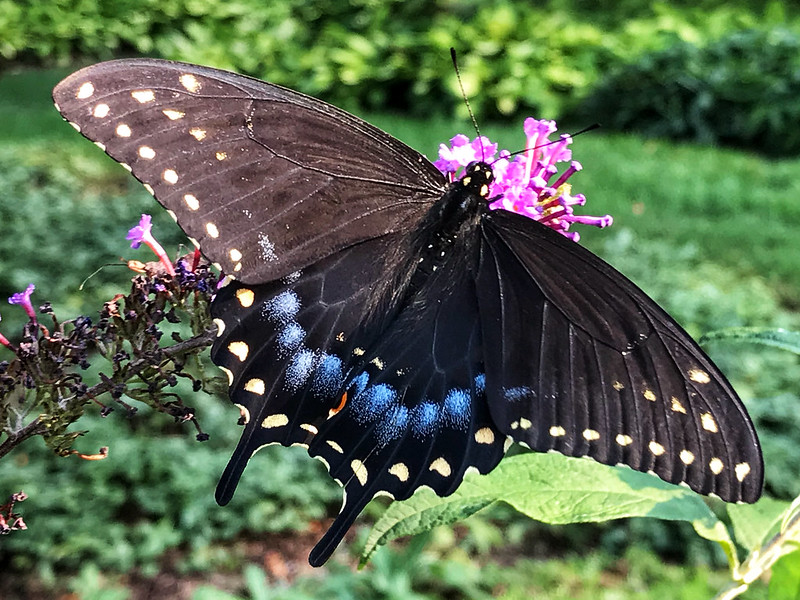
I’m behind in keeping up my personal account of summer 2019, so here’s a common green darner to tide me over. They were swarming at Perennial Garden today, where one posed for me despite the winds whipping the plants to pieces and photos into blurs.


Lately I’ve seen a few news items about blue-green algae killing dogs and taking over parts of Lake Erie. Who knew it was so close to home? Note: It hasn’t stopped people from fishing.
We’ve had the eastern tiger swallowtail. Here’s a female black swallowtail, equally colorful in her own way.

Here’s video of a persistent male.
Sadly, this painted lady butterfly was killed by a crab spider or assassin bug shortly after I took this photo.
